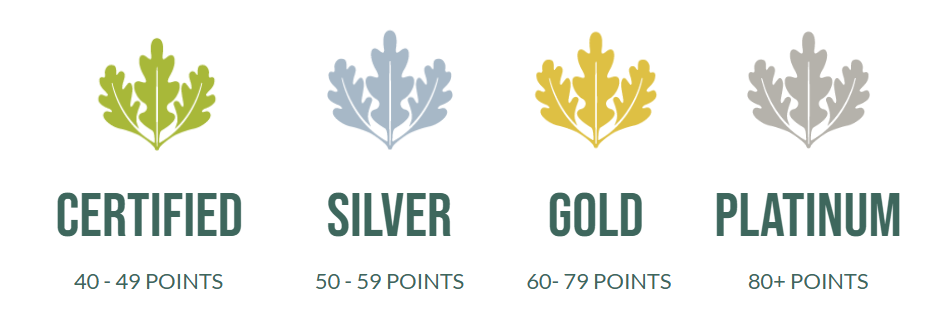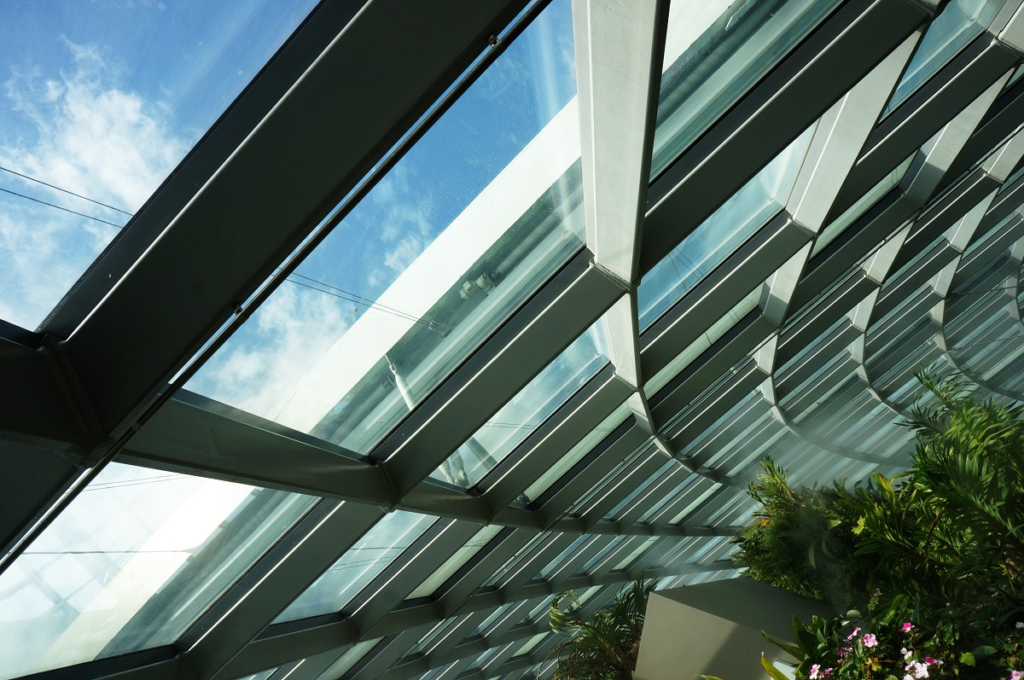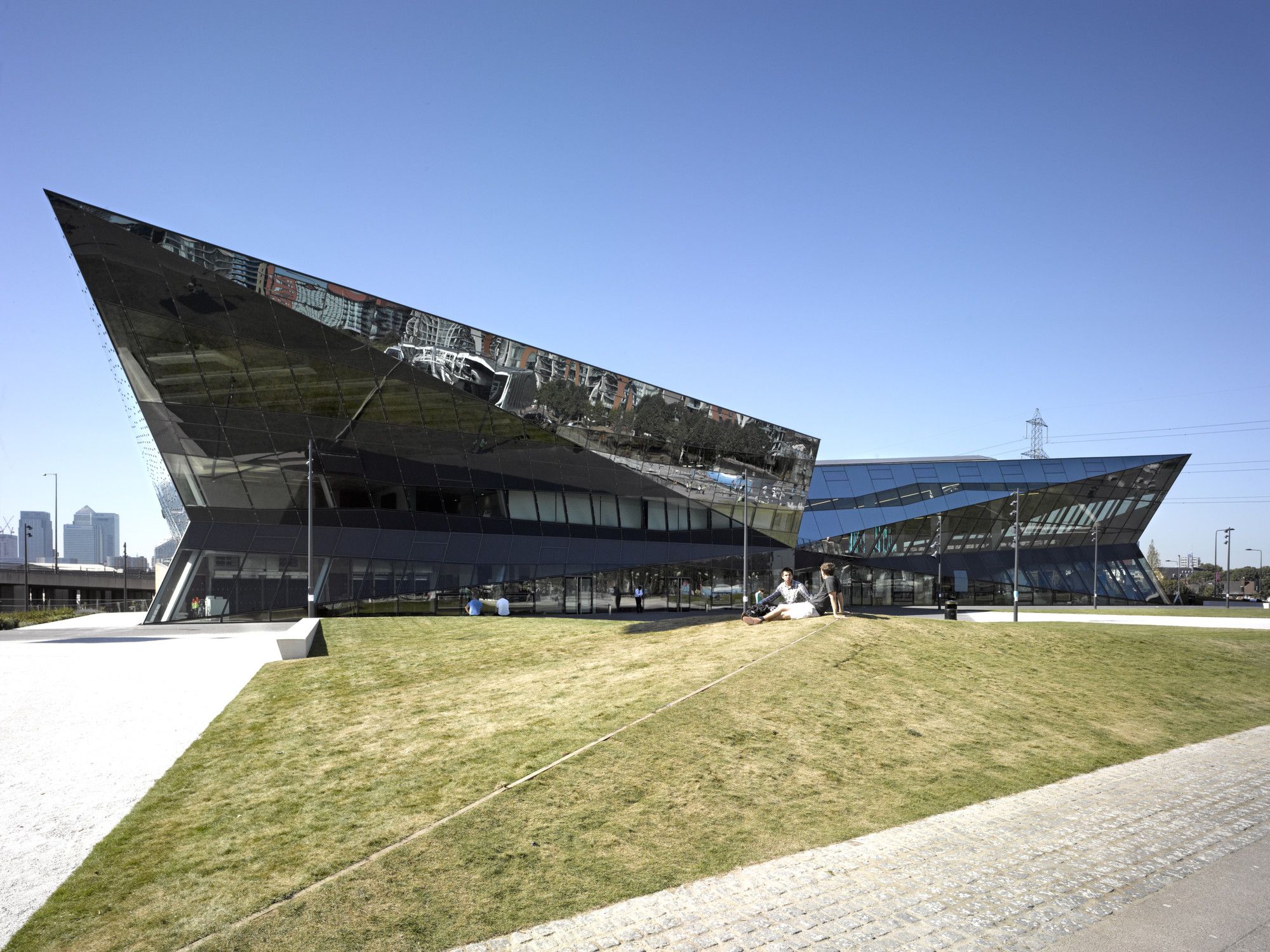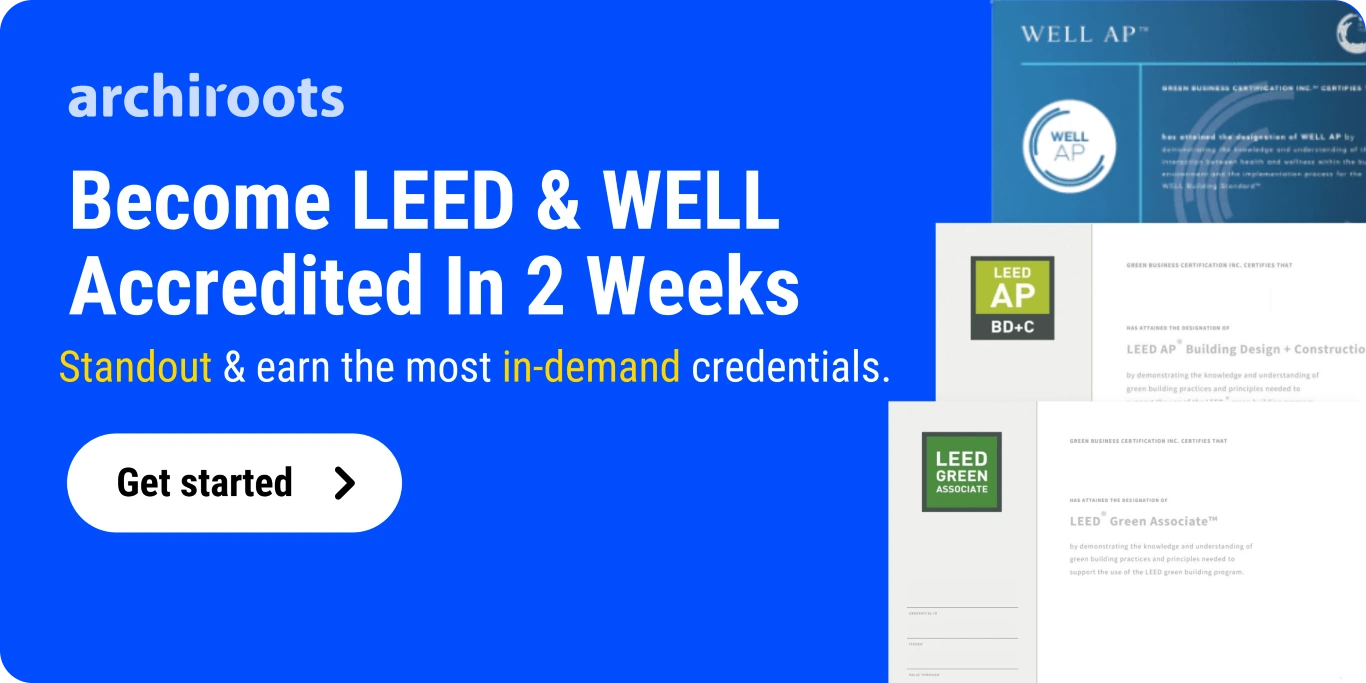To be eligible to gain the building certification, the project must comply with the LEED certification requirements. Mostly named MPR or minimum program requirements, which are the eligibility requirements to apply for LEED. Today, reducing the environmental impact of the architecture, engineering, and construction sector is more important than ever in a time when climate change is a top concern worldwide. In addition to showcasing your commitment to green building concepts, meeting these standards establishes your project as an innovative, environmentally responsible leader in the field. A LEED building is a representation of excellent performance, environmental responsibility, and innovation. Let’s examine how you might effectively fulfill the fundamental LEED certification requirements in your next project.
What is a LEED Building?
A LEED building is a sustainable green building follows the USGBC standard and accessed by GBCI verifications. Applicable and open to any building type, LEED presents a system that constructs highly efficient, economic, and healthy green buildings. Developed in 1994, LEED was intended to drive those in building, construction, and design in pursuit of environmental and sustainable practices in the industry. It is a third-party green building certification program that verifies a project designed and built with strategies and components in maximizing sustainability.
LEED certified buildings refers to projects that have achieved all LEED certification requirements and been designed, built, and maintained using sustainable green building practices. LEED certified buildings are designed and constructed with great emphasis on energy savings, water efficiency, enhanced indoor air quality, and reduced carbon emissions. In addition, the project’s overall stewardship of resources and awareness of its impact on the environment are taken into account.
3 LEED Certification Requirements

To ensure consistency and integrity in the certification process, LEED has established qualifications like the Minimum Program Requirements (MPRs) which are the main LEED requirements to be eligible to apply for the standard. These requirements serve as a foundation, outlining the key criteria that a project must meet. Mentioned below are the three key LEED certification qualifications that you must consider.
1. Permanent Location
One of the fundamental requirement is to be in a permanent location on existing land. This requirement reflects the program’s commitment to assessing and certifying projects that contribute to the long-term sustainability and environmental responsibility of existing urban or natural landscapes. It also helps in excluding transient or temporary structures, emphasizing LEED’s focus on promoting environmental stewardship in lasting, fixed locations.
2. Reasonable LEED boundaries
LEED projects must adhere to reasonable boundaries when defining the project site. This ensures that the frontier set for assessment aligns with the actual scope of the project and its environmental impact. Reasonable LEED boundaries help prevent projects from inappropriately extending or excluding areas to enhance their certification prospects. This requirement underscores the importance of accurately reflecting the environmental efforts and impacts of each project. It promotes transparency and integrity.
3. Project Size Requirements
Project size requirements vary depending on the specific LEED rating system and project type. These qualifications define the minimum and maximum size thresholds that a project must fall within to be eligible for certification. Meeting project size requirements ensures that LEED certified buildings are of a substantial size, and capable of making a meaningful environmental impact.
LEED Certification Levels

By fulfilling a diverse set of LEED requirements, you can achieve a suitable LEED level for your project. Based on a comprehensive evaluation of various aspects of a building’s design and construction by the USGBC, a project receives its LEED score. This score is a numerical representation of a building’s environmental performance and overall sustainability. The total number of points received by a project determines the LEED certification level it will receive. Below is a detailed description of all the LEED certification levels a project can qualify for:
LEED Certified
The first level is “LEED Certified.” To attain this level, a building must earn between 40 and 49 points on the LEED scorecard. These points are awarded based on a range of sustainable practices, from energy efficiency to water conservation and indoor air quality. Achieving LEED Certified means it earned the base level, whereas LEED certified with a lower case “c” means it earned the certification but we do not know the level (the amount of points it earned).
LEED Silver
Moving up the ladder, the next level is “LEED Silver.” To achieve this, a building must earn between 50 and 59 points. LEED Silver certification recognizes a more substantial commitment to sustainability and a higher level of environmental performance. Achieving this status involves implementing more advanced green building strategies and technologies, such as improved energy efficiency and better use of renewable resources.
LEED Gold
The “LEED Gold” level signifies a substantial dedication to sustainability and a highly efficient building design. To achieve LEED Gold certification, a building must earn between 60 and 79 points on the LEED scorecard. This level often requires the incorporation of cutting-edge technologies, renewable energy sources, and innovative construction methods to significantly reduce environmental impact.
LEED Platinum
At the pinnacle of the LEED rating system is “LEED Platinum.” This represents the highest level of certification and requires a building to earn 80 or more points on the LEED scorecard. LEED Platinum structures are often considered environmental champions, setting new standards for sustainability and resource efficiency. Achieving LEED Platinum certification typically involves a comprehensive approach to sustainability, such as net-zero energy consumption, the use of advanced building materials, and innovative water and waste management systems.
Types of LEED Certification (Rating Systems)

The versatility of LEED is not limited to specific project types; it encompasses a wide range of construction and development projects. Below is a list of the different types of LEED certification that a project can qualify for.
Building Design and Construction (BD+C)
The first type and most in-demand of all the types of LEED certification is the BD+C category is one of the most common types of projects. It covers new construction and major renovation projects, including commercial and residential buildings, schools, healthcare facilities, and more. BD+C projects aim to create sustainable structures from the ground up.
Interior Design and Construction (ID+C)
ID+C projects encompass the interior fit-out and renovation of existing spaces. This category applies to commercial interiors such as offices, retail spaces, and hospitality venues. It focuses on creating healthy, efficient, and environmentally responsible interior environments, often involving energy-efficient lighting, HVAC systems, and sustainable interior finishes.
Building Operations and Maintenance (O+M)
O+M projects involve existing buildings and focus on optimising the building’s operational performance and environmental impact. These projects aim to improve energy efficiency, water conservation, and indoor air quality in ongoing building operations, including commercial, institutional, and residential structures.
Neighbourhood Development (ND)
ND projects pertain to entire communities or neighbourhoods. This category encourages sustainable planning, design, and development of communities that prioritise walkability, green spaces, and sustainable transportation options.
Cities and Communities
Expanding the scope beyond individual neighborhoods, the Cities and Communities category focuses on the sustainability of entire cities and regions. It emphasizes urban planning, infrastructure, transportation, and community well-being.
Homes
LEED for Homes is designed for residential buildings, including single-family homes and multi-family buildings. These projects aim to create energy-efficient, healthy, and environmentally responsible living spaces for residents.
LEED Recertification
LEED Recertification is applicable to projects that have previously earned LEED certification and wish to maintain their sustainable status. This process ensures that the building continues to meet LEED standards over time.
LEED Zero
LEED Zero is a performance-based certification for existing LEED-certified projects that want to achieve net-zero energy, water, or carbon emissions. It reflects a commitment to reducing environmental impact further.
3 Benefits of LEED Certified Buildings
The principal reason for striving for a LEED building is to demonstrate the earnest intention in practicing sustainable design and construction. It is easy to claim that a building is green, but a third-party rating, especially one with a tremendous reputation, indicates to many in the industry that the building has successfully achieved a high standard. Any business would appreciate that a LEED building would provide a healthier environment for its employees whilst also featuring energy and water efficiency features that would result in lower bills.
Gaining the LEED certification building requirements would also grant a competitive edge in the market. It assists investors in meeting their ESG (Environmental, Social, and Governance) goals by providing a globally recognized green building framework for measuring and managing their real estate performance.
Earning professional credentials is a way of advancing your specialty knowledge amongst those around you, including potential employers. USGBC recognizes that many industry professionals are inclined to prove their expertise and offers LEED credentials for that intention.
There are economic, environmental, and health benefits associated with LEED buildings, which will be elaborated on below.
1. Economic Benefits
Having a LEED building provides an edge in the competitive building industry. Experts in the market estimate that integrating sustainability results in market differentiation and improved financial performance.
A LEED building can also greatly attract tenants due to it being less expensive to maintain and having less waste production. LEED’s principles in saving energy and water results in reducing the building’s energy and water consumption, thus ending up with a cost-effective building.
2. Environmental Benefits
Buildings that are LEED certified buildings have features that help conserve energy and water and reduce carbon emissions and waste. According to a UC Berkeley study done in 2014, LEED buildings had a 50% reduction in GHGs than the conventionally constructed buildings because of water consumption.
With LEED’s strong encouragement of sustainable or green material use, certified buildings are estimated to have specified more than $100 billion in green materials. Energy-efficient buildings also reduce pollution and benefit outdoor air quality in industrialized areas, potentially mitigating smog. Cities are now seizing the idea of green buildings becoming a mitigation strategy towards the effects of climate change, making air and the environment healthier for its inhabitants. Such strategies reduce the emission of toxic carbon emissions, ultimately helping the environment.
3. Health Benefits
Encouraging wellness is a high priority for employers, buildings, and city planners alike. LEED has an entire credit category dedicated to the quality and state of the indoor environment: Indoor Environmental Quality (EQ). Buildings that utilize LEED enable occupants to live, play, learn, and work in environments that optimize human health. With LEED’s standards highly emphasizing health and well-being, superior environments are created for building occupants that augment or enhance the indoor air quality and natural lighting, resulting in highly productive employees.
Enhancement of the indoor air quality can potentially reduce absenteeism and work hours inflicted by asthma, respiratory allergies, stress, and depression in buildings with leed certification.
With green technology gaining more interest from companies, LEED certified buildings are becoming more attractive to tenants and organizations. It is also important for professionals who plan, design, and construct.
It is clear that sustainable construction and design is the way forward to a better and cleaner future. Not only is it a positive effect on the planet, but it is an exciting movement in innovation and business. As more designers, builders, and developers get involved, buildings with leed certification plays a significant role in maintaining high green building standards and paving the way to a greener and more sustainable future.

7 Goals of LEED Certified Buildings

Beyond its certification process, LEED buildings encompass a set of clear goals that guide them toward a more sustainable and environmentally responsible path. Let’s have a look at these objectives below.
1. Optimal Use of Energy
One of the foremost goals of LEED is to combat climate change by reducing the environmental footprint of buildings. Buildings are a significant source of greenhouse gas emissions. LEED aims to minimise this contribution by emphasising energy efficiency, renewable energy, and carbon reduction strategies, thereby lowering the overall impact on the planet.
2. Improve Human Health
LEED recognizes that the well-being of building occupants is paramount. As a result, the program places a strong focus on creating indoor environments that promote human health and comfort. This includes building requirements like optimal indoor air quality, natural lighting, and the use of non-toxic building materials.
3. Enhance Water Efficiency
Water is a precious resource, and LEED strives to conserve it. The LEED building requirements encourage efficient water usage within buildings through innovations like low-flow fixtures, rainwater harvesting, and wastewater treatment systems. By preserving freshwater resources, LEED addresses a critical aspect of environmental sustainability.
4. Safeguarding the Ecosystem
Biodiversity and healthy ecosystems are essential for the planet’s survival. LEED promotes the protection of ecosystems and biodiversity by encouraging sustainable land use practices and the preservation of natural habitats. This goal contributes to the holistic development of the environment and contributes to its peaceful co-existence with the human populace.

5. Thoughtful Material Usage
The sustainable use of materials is a fundamental aspect of the building requirements. The program encourages responsible sourcing of materials, recycling, and waste reduction, promoting long-term material use and reducing the environmental impact of the construction industry.
6. Creating Sustainable Communities
LEED envisions thriving, sustainable communities that provide a high quality of life for residents. This goal encourages neighbourhood development practices that support walkability, access to public transportation, green spaces, and community engagement.
7. Conserve Natural Resources
The conservation of natural resources is a fundamental tenet of LEED. The program emphasizes the responsible use of resources, including land, energy, and water. By conserving natural resources, LEED buildings reduce waste and minimize the environmental impact of building projects.
In Conclusion
LEED buildings not only benefit the environment but also enhances the overall quality of built spaces, promoting healthier, more sustainable communities. It serves as a testament to the dedication of those involved in making our world a greener and more sustainable place.





